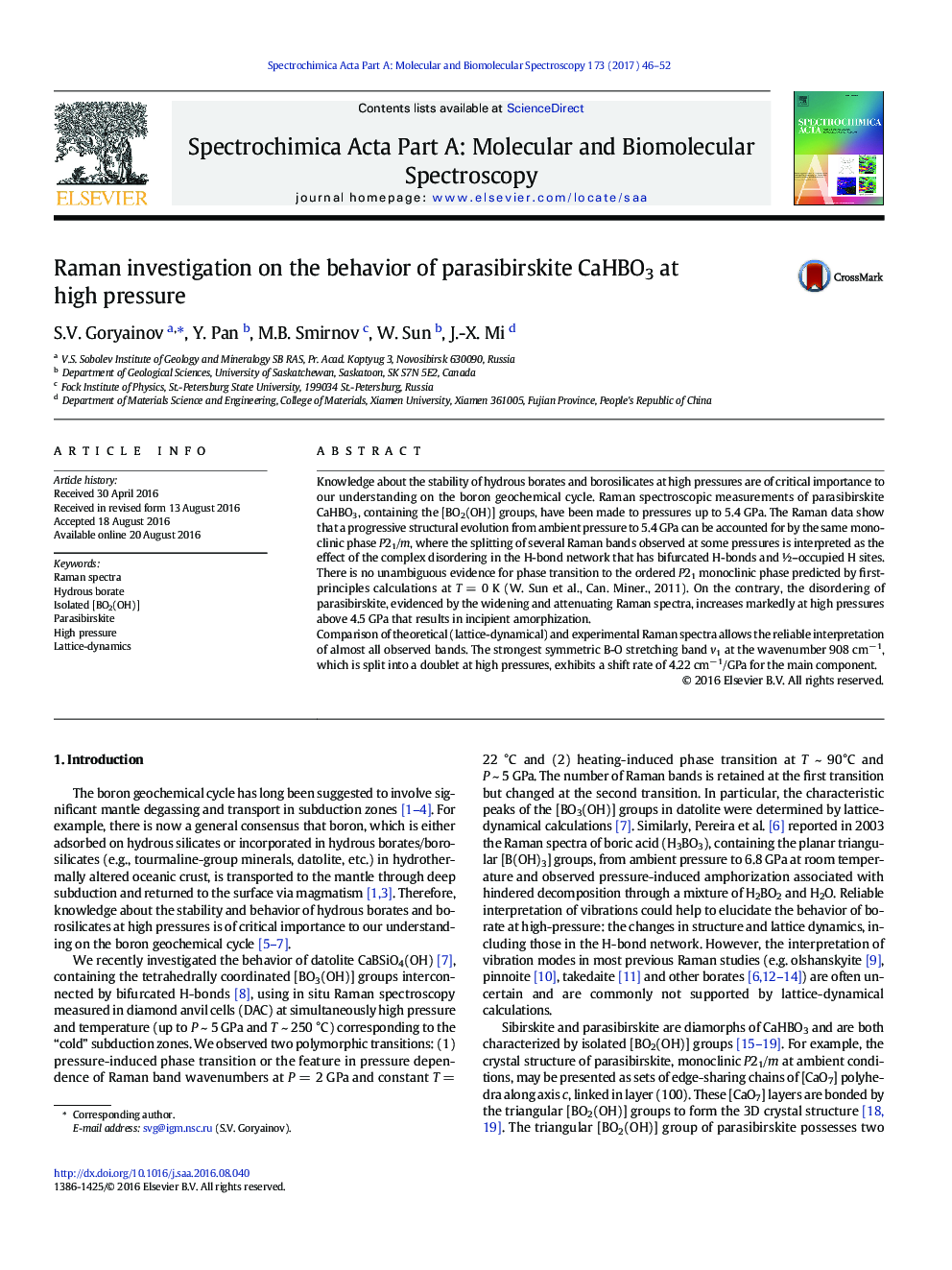| کد مقاله | کد نشریه | سال انتشار | مقاله انگلیسی | نسخه تمام متن |
|---|---|---|---|---|
| 1229829 | 1495196 | 2017 | 7 صفحه PDF | دانلود رایگان |
• Raman spectroscopic measurements of parasibirskite CaHBO3 have been made to pressures up to 5.4 GPa.
• Comparison of the theoretical and experimental Raman spectra allows reliable interpretation of almost all observed bands.
• There is no unambiguous evidence for phase transition to the ordered P21 monoclinic phase predicted earlier by first-principles calculations. On the contrary, the disordering of parasibirskite increases markedly at high pressure.
Knowledge about the stability of hydrous borates and borosilicates at high pressures are of critical importance to our understanding on the boron geochemical cycle. Raman spectroscopic measurements of parasibirskite CaHBO3, containing the [BO2(OH)] groups, have been made to pressures up to 5.4 GPa. The Raman data show that a progressive structural evolution from ambient pressure to 5.4 GPa can be accounted for by the same monoclinic phase P21/m, where the splitting of several Raman bands observed at some pressures is interpreted as the effect of the complex disordering in the H-bond network that has bifurcated H-bonds and ½–occupied H sites. There is no unambiguous evidence for phase transition to the ordered P21 monoclinic phase predicted by first-principles calculations at T = 0 K (W. Sun et al., Can. Miner., 2011). On the contrary, the disordering of parasibirskite, evidenced by the widening and attenuating Raman spectra, increases markedly at high pressures above 4.5 GPa that results in incipient amorphization.Comparison of theoretical (lattice-dynamical) and experimental Raman spectra allows the reliable interpretation of almost all observed bands. The strongest symmetric B-O stretching band v1 at the wavenumber 908 cm− 1, which is split into a doublet at high pressures, exhibits a shift rate of 4.22 cm− 1/GPa for the main component.
Figure optionsDownload as PowerPoint slide
Journal: Spectrochimica Acta Part A: Molecular and Biomolecular Spectroscopy - Volume 173, 15 February 2017, Pages 46–52
